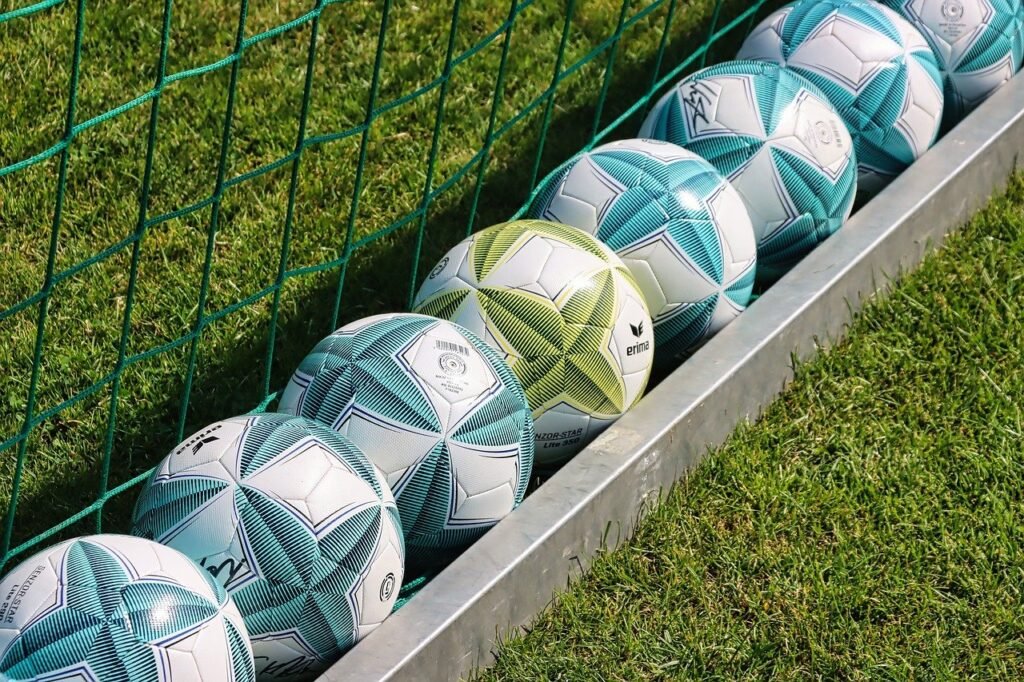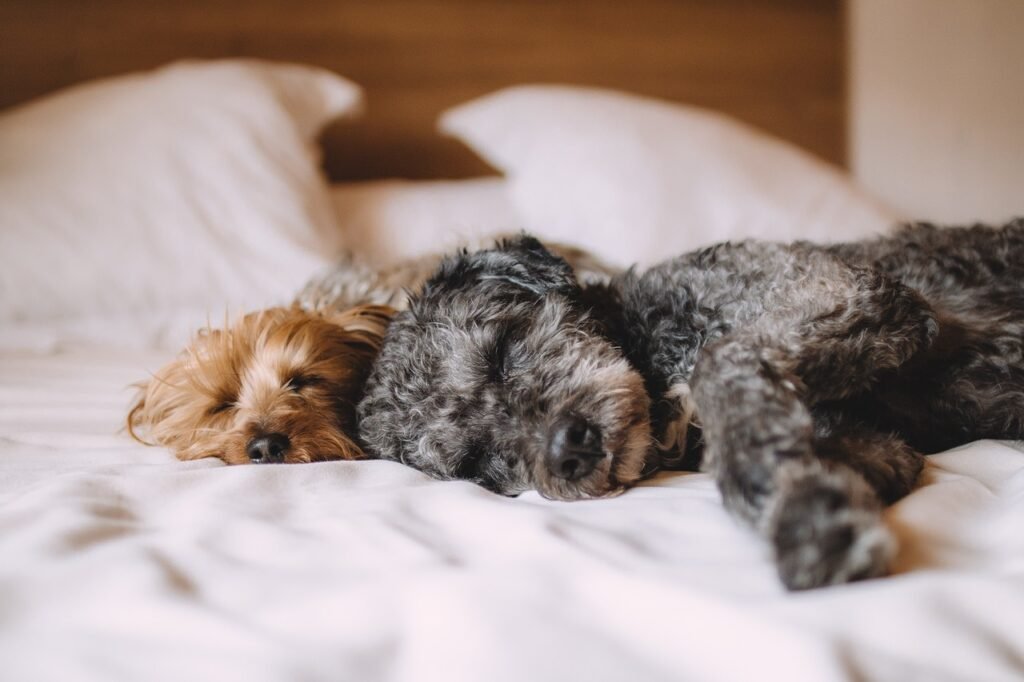If you’re a dog owner, you know how important it is to establish a routine for your furry friend. One effective routine that can bring numerous benefits to both you and your dog is the crate routine. A crate can provide a safe and comfortable space for your dog, helping with house training, preventing destructive behavior, and reducing anxiety. In this article, we’ll explore the many advantages of establishing a crate routine for dogs and how it can contribute to a harmonious and happy life for both you and your beloved pet. So, let’s get started on this journey towards a well-structured and contented canine companionship.

This image is property of pixabay.com.
Why Establish a Crate Routine
Create a safe space for your dog
Having a crate routine helps you create a safe and comfortable space for your dog. Dogs are den animals by nature, so having a crate can provide them with a secure place that resembles the dens they would seek out in the wild. This safe space becomes their own personal sanctuary, where they can retreat to whenever they feel overwhelmed or need some alone time.
Help with house training
Implementing a crate routine can be highly beneficial when it comes to house training your dog. Dogs naturally do not like to soil their sleeping area, so by keeping them in a crate during house training, you are teaching them to hold their bladder and bowels until they are taken outside. This helps to establish a routine for bathroom breaks and encourages them to develop good bathroom habits.
Prevent destructive behavior
Dogs who are not properly trained or who suffer from separation anxiety often resort to destructive behavior when left alone. By implementing a crate routine, you can prevent your dog from damaging your belongings or causing harm to themselves. The crate acts as a safe and secure place for them to stay when you are away, reducing the risk of destructive behavior.
Aid in separation anxiety
Separation anxiety is a common issue among dogs, causing stress and emotional distress when they are left alone. A crate routine can actually help alleviate separation anxiety by providing a sense of security and comfort for your dog. When they associate the crate with positive experiences and learn that you will return after leaving, their anxiety levels can decrease over time.
Selecting the Right Crate
Choose the right size
When selecting a crate for your dog, it is crucial to choose the right size. You want a crate that is large enough for your dog to stand up, turn around, and lie down comfortably, but not so large that they can use one corner as a bathroom area. It is important to consider your dog’s adult size and choose a crate that will accommodate their growth. You can also opt for crates with adjustable dividers to accommodate puppies.
Consider the material
Crates come in a variety of materials, including wire, plastic, and fabric. Each material has its pros and cons, so it is important to consider your dog’s needs and preferences. Wire crates provide good ventilation and visibility, while plastic crates offer a more den-like feel. Fabric crates are lightweight and portable, but may not be suitable for dogs who tend to chew or scratch.
Opt for a secure design
When selecting a crate, it is crucial to choose one with a secure design. Look for crates with sturdy locks or latches to ensure that your dog cannot escape. This is especially important for dogs who may become anxious or fearful when left alone. A secure crate gives you peace of mind knowing that your dog is safe and contained.

This image is property of pixabay.com.
Introducing the Crate
Create positive associations
To help your dog adjust to the crate, it is important to create positive associations with it. Start by placing the crate in a central area of your home where your dog can see and feel included in the family’s activities. Make the crate inviting by placing soft bedding, toys, and treats inside. This will help your dog view the crate as a positive and comfortable space.
Gradual crate introduction
Introduce the crate gradually to your dog, allowing them to explore and become familiar with it at their own pace. Leave the crate door open initially and encourage your dog to sniff around and investigate. Never force your dog into the crate or close the door immediately. Give them time to feel comfortable and secure before moving onto the next step.
Use treats and toys
Using treats and toys can be highly effective in creating positive associations with the crate. Start by tossing treats near the crate to encourage your dog to approach it willingly. As they become more comfortable, gradually place the treats further inside the crate. You can also place their favorite toys or chews inside the crate to keep them entertained and engaged.
Implementing the Crate Routine
Set a consistent schedule
Setting a consistent schedule is key to successfully implementing a crate routine. Designate specific times for your dog to be in the crate, such as during meal times or when you are away from home. Consistency helps your dog understand and anticipate crate time, making the routine easier to follow.
Use the crate for short periods initially
When implementing the crate routine, start by using the crate for short periods of time initially. This allows your dog to become accustomed to being in the crate without feeling overwhelmed or stressed. As they become more comfortable, gradually increase the length of time they spend in the crate.
Gradually increase crate time
Over time, gradually increase the amount of time your dog spends in the crate. This helps them build tolerance and become more relaxed in the confined space. However, it is essential to ensure that your dog’s physical and mental needs are met outside of the crate as well. A crate routine should complement their daily exercise, playtime, and socialization.

This image is property of pixabay.com.
Benefits of the Crate Routine
Facilitates better behavior
Establishing a crate routine can help facilitate better behavior in your dog. When they are consistently and appropriately crate trained, they will be less likely to engage in destructive or undesirable behaviors when left alone. The routine provides them with structure and guidance, promoting positive habits and better overall behavior.
Helps prevent accidents
By implementing a crate routine, you significantly reduce the chances of your dog having accidents in the house. The crate serves as a safe and enclosed space where your dog is less likely to soil their sleeping area. This helps tremendously during the house training process, as your dog learns to associate the crate with keeping their living space clean.
Reduces anxiety
The crate routine can greatly reduce anxiety in dogs, particularly those who suffer from separation anxiety. The safe and secure environment of the crate offers a sense of comfort and familiarity to your dog, alleviating stress and anxious behaviors. When they have a designated space of their own, they can feel more relaxed and at ease when you are away.
Promotes independence
Establishing a crate routine promotes independence in your dog. When they are comfortable being in the crate alone, they learn to rely on themselves for entertainment and stimulation. This can be particularly helpful for dogs who struggle with separation anxiety or who have difficulty being alone for extended periods. The crate routine encourages them to develop coping mechanisms and become more self-reliant.
Provides a sense of security
For dogs, having a routine provides a sense of security and predictability. The crate becomes their own personal space, where they can go to relax, rest, and feel safe. It creates a comforting environment that allows them to unwind and recharge. By following a crate routine, you are giving your dog the gift of security and stability.
Ensuring a Positive Crate Experience
Make the crate comfortable
To ensure a positive crate experience, it is essential to make the crate as comfortable as possible for your dog. Use soft bedding or blankets to create a cozy sleeping area. Make sure the crate is well-ventilated and provides adequate airflow. You can also add familiar scents, such as their favorite toy or a piece of your clothing, to further enhance their comfort level.
Avoid using the crate for punishment
It is crucial to avoid using the crate as a form of punishment. The crate should always be associated with positive experiences, relaxation, and comfort. Using the crate as a punishment can create negative associations and cause your dog to develop fear or anxiety towards it. Keep the crate a safe space that your dog willingly enters and enjoys, rather than a place where they are sent as a consequence.
Implement positive reinforcement
Positive reinforcement is a powerful tool when crate training your dog. Whenever your dog willingly enters the crate or exhibits calm behavior while inside, praise and reward them with treats or verbal praise. This reinforces the positive associations and encourages your dog to view the crate as a desirable place to be. Consistency and positive reinforcement go hand in hand in ensuring a positive crate experience.
Provide mental stimulation
In addition to physical exercise, it is important to provide your dog with mental stimulation while they are in the crate. This can be achieved through toys, interactive puzzles, or food-dispensing toys that require problem-solving skills. Mental stimulation helps keep your dog engaged and prevents boredom, making crate time a positive and enjoyable experience for them.
Avoiding Common Pitfalls
Don’t use the crate as a long-term solution
While a crate routine can be highly beneficial, it should not be used as a long-term solution for confinement. Dogs need ample space to move around, explore, and interact with their environment. Crating your dog for excessively long periods of time can lead to physical and mental health issues. Use the crate as a tool for short-term confinement or when you are unable to directly supervise your dog.
Don’t leave the dog in the crate for excessive periods
Similar to the previous point, it is important not to leave your dog in the crate for extended periods of time. Dogs are social creatures and thrive on human interaction and companionship. Leaving them in the crate for excessive periods can lead to feelings of isolation and loneliness. Be mindful of your dog’s needs and ensure they receive adequate physical and mental stimulation outside of the crate.
Don’t rush the process
Crate training is a gradual process that should be approached with patience and understanding. Each dog is different, and some may take longer to adjust to the crate than others. It is important not to rush or force your dog into the crate. Allow them to acclimate at their own pace and provide positive reinforcement to encourage their progress. Rushing the process can create fear and anxiety, undermining the goal of establishing a positive crate routine.
Crate Routine as a Travel Aid
Familiarity and comfort while traveling
One of the benefits of having a crate routine is that it can act as a travel aid for your dog. When you bring their familiar crate along on trips, it provides them with a sense of security and comfort in unfamiliar environments. The crate becomes their safe haven, giving them a consistent space where they can relax and feel at ease.
Easier transport
Having a crate routine in place makes transporting your dog much easier. Whether you are traveling by car or plane, a crate provides a safe and secure way to transport your dog. It keeps them contained and prevents them from becoming a distraction while you are driving. Additionally, airlines often require dogs to be crated during flights, so having a crate routine established makes the entire travel process smoother and less stressful.
Reduced anxiety during trips
Traveling can be stressful for dogs, as they are exposed to new sights, sounds, and smells. However, with a crate routine in place, your dog can find comfort in their familiar crate, reducing anxiety levels. They have their own cozy and secure space to retreat to, allowing them to feel more at ease during the trip. This makes traveling a more positive and less stressful experience for both you and your dog.
Consulting a Professional
Seek advice from a veterinarian or dog trainer
If you are unsure about how to establish a crate routine or encounter any difficulties along the way, it is always helpful to seek advice from a professional. A veterinarian or dog trainer can provide guidance and expertise tailored to your dog’s specific needs. They can offer tips, techniques, and personalized advice to ensure that the crate routine is effective and beneficial for your dog.
Customize the routine based on your dog’s needs
Every dog is unique, and what works for one may not work for another. It is essential to customize the crate routine based on your dog’s individual needs and preferences. Certain dogs may require more frequent crate time or additional mental stimulation, while others may need a slower and more gentle approach. By consulting a professional, you can tailor the crate routine to best suit your dog’s specific requirements.
Conclusion
Establishing a crate routine for your dog is a decision that benefits both dogs and owners. The routine provides a safe and secure space for your dog, aids in house training, prevents destructive behavior, and helps with separation anxiety. By choosing the right crate, introducing it gradually, and implementing a consistent schedule, you can create positive associations and ensure a positive crate experience. The routine promotes better behavior, helps prevent accidents, reduces anxiety, promotes independence, and provides a sense of security. While implementing a crate routine, it is important to ensure your dog’s comfort, avoid using the crate for punishment, implement positive reinforcement, and provide mental stimulation. Avoid common pitfalls such as using the crate as a long-term solution, leaving the dog in the crate for excessive periods, and rushing the process. Additionally, a crate routine can serve as a travel aid, providing familiarity, easier transport, and reduced anxiety during trips. Consulting a professional, such as a veterinarian or dog trainer, can offer valuable guidance and support in customizing the crate routine to meet your dog’s specific needs. Ultimately, establishing a crate routine contributes to the well-being and happiness of your dog, promoting them to become a happy and well-adjusted pet.



